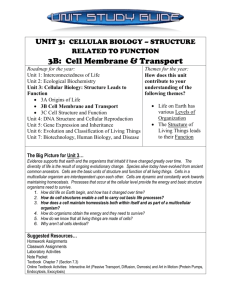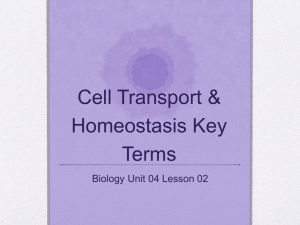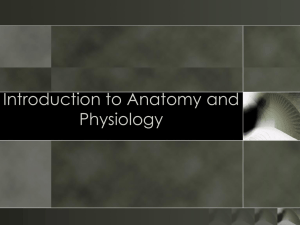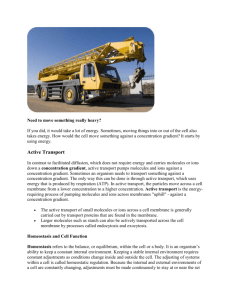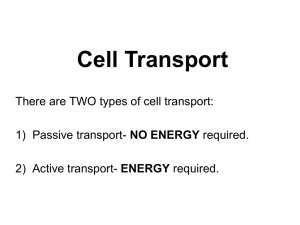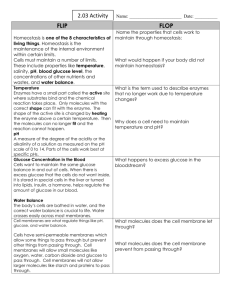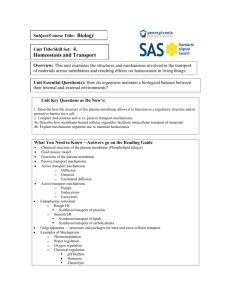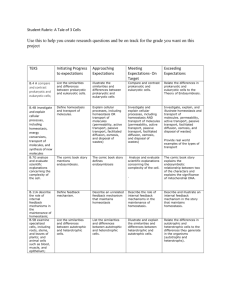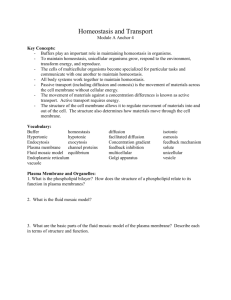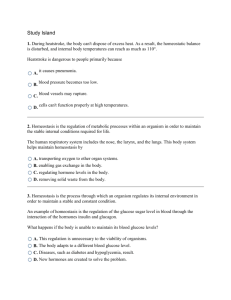Microsoft Word - homeostasis cell transport
advertisement
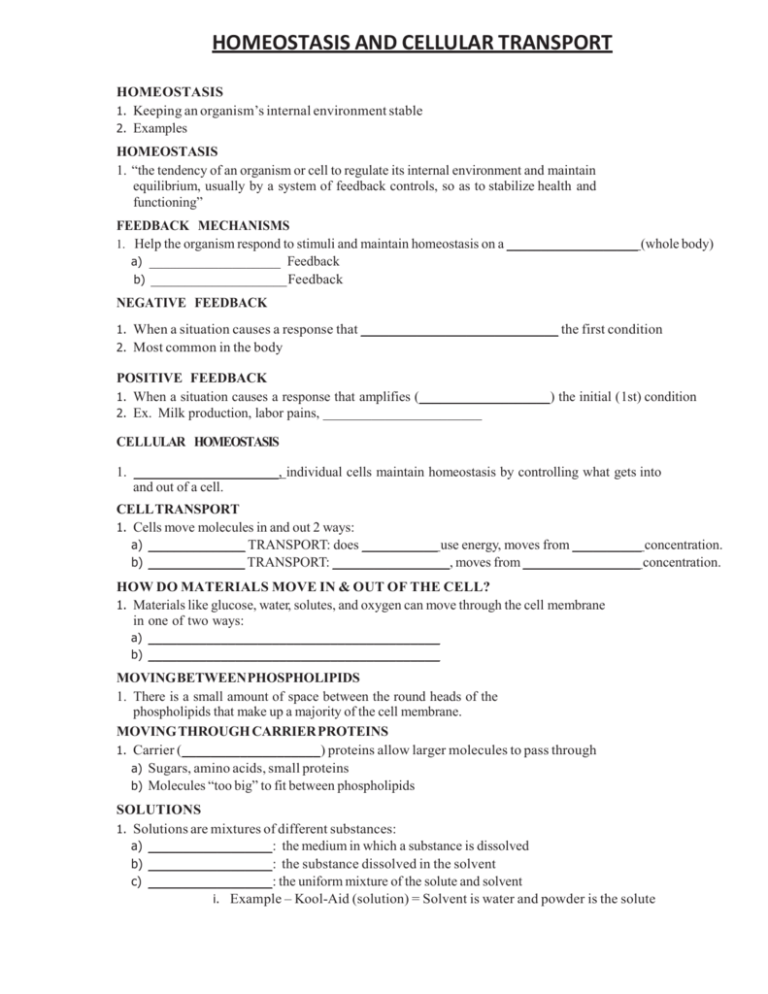
HOMEOSTASIS AND CELLULAR TRANSPORT HOMEOSTASIS 1. Keeping an organism’s internal environment stable 2. Examples HOMEOSTASIS 1. “the tendency of an organism or cell to regulate its internal environment and maintain equilibrium, usually by a system of feedback controls, so as to stabilize health and functioning” FEEDBACK MECHANISMS 1. Help the organism respond to stimuli and maintain homeostasis on a ___________________ (whole body) a) ___________________ Feedback b) ____________________ Feedback NEGATIVE FEEDBACK 1. When a situation causes a response that ____________________________ the first condition 2. Most common in the body POSITIVE FEEDBACK 1. When a situation causes a response that amplifies (___________________) the initial (1st) condition 2. Ex. Milk production, labor pains, _______________________ CELLULAR HOMEOSTASIS 1. _____________________, individual cells maintain homeostasis by controlling what gets into and out of a cell. CELL TRANSPORT 1. Cells move molecules in and out 2 ways: a) _______________ TRANSPORT: does ___________ use energy, moves from __________ concentration. b) ______________ TRANSPORT: _________________, moves from _________________ concentration. HOW DO MATERIALS MOVE IN & OUT OF THE CELL? 1. Materials like glucose, water, solutes, and oxygen can move through the cell membrane in one of two ways: a) ________________________________________ b) ________________________________________ MOVING BETWEEN PHOSPHOLIPIDS 1. There is a small amount of space between the round heads of the phospholipids that make up a majority of the cell membrane. MOVING THROUGH CARRIER PROTEINS 1. Carrier (___________________) proteins allow larger molecules to pass through a) Sugars, amino acids, small proteins b) Molecules “too big” to fit between phospholipids SOLUTIONS 1. Solutions are mixtures of different substances: a) __________________: the medium in which a substance is dissolved b) __________________: the substance dissolved in the solvent c) __________________: the uniform mixture of the solute and solvent i. Example – Kool-Aid (solution) = Solvent is water and powder is the solute HOMEOSTASIS AND CELLULAR TRANSPORT PASSIVE TRANSPORT 1. Molecules move with the flow, from ____________________________________ concentrations. 2. _____________________________________ 3. This will continue until they are evenly spread out or reached equilibrium 4. 3 Types: a) ________________________ b) ________________________ c) ________________________ PASSIVE TRANSPORT - DIFFUSION 1. ________________: the movement of molecules from areas of ________________ concentration to areas of ___________________ concentration. PASSIVE TRANSPORT – FACILITATED DIFFUSION 1. ____________________________: Movement of molecules from ________________________. 2. A __________ in the membrane _____________________________________________ in the membrane. 3. Movement of larger molecules (ex. glucose) form high concentration to low concentration with the help of a carrier protein. PASSIVE TRANSPORT - OSMOSIS 1. Osmosis: movement of ______________ from ___________________________________. a. Specific type of Diffusion – ______________________ i. The movement of water across a membrane from an area of high concentration of water to an area of lower water concentration PASSIVE TRANSPORT - OSMOSIS 1. Need to understand the concentrations of solvents & solutes on either side of the membrane. DIFFUSION / OSMOSIS AND CELLS 1. Solutions are classified in 3 ways based on their concentrations of water in relation to the inside of cells a) ________________: Higher H2O concentration inside the cell b) ________________: Higher H2O concentration outside the cell c) ________________: Equal concentrations of H2O inside and outside the cell ISOTONIC SOLUTION 1. When the cell is at equilibrium with its environment, ________________________________ move into and out of the cell HYPERTONIC SOLUTION 1. When there is more ________________________________________________________. a. This can cause a cell to ____________________________ HYPTOTONIC SOLUTION 1. When there is more water outside a cell than inside of a cell a. Water will enter the cell b. This can be bad, if too much water enters then the cell may lyse (burst) ______________ HOMEOSTASIS AND CELLULAR TRANSPORT THE EFFECTS OF DIFFUSION & OSMOSIS ON LIVING CELLS 1. Both diffusion and osmosis will result in changes to living cells a. The movement of water & other solutes back and forth across the membrane will change the volume and pressure inside of the cell b. Since plant cells are surrounded by a rigid outer layer, the overall shape will NOT change, but the pressure inside will PLASMOLYSIS 1. _________________ respond differently to osmosis because of their ______________________. 2. When water leaves a plant cell the cell wall’s shape does not change, but the cell membrane pulls away and creates an air pocket between the two. This causes the plant to ____________________. TURGOR PRESSURE 1. When water enters a plant cell, the cell membrane _____________________________________________. ACTIVE TRANSPORT 1. Move molecules against the flow, ________________________________ concentration. 2. ______________________________________ 3. It’s like pushing something up hill instead of letting it roll downhill ACTIVE TRANSPORT 1. For Multicellular Organisms: 2. Uses a carrier protein, to carry them across the membrane ACTIVE TRANSPORT 1. For Unicellular Organisms 2. ___________________ organelle that transports materials through, into, or out of a cell 3. ___________________ into the cell 4. ___________________out of the cell

